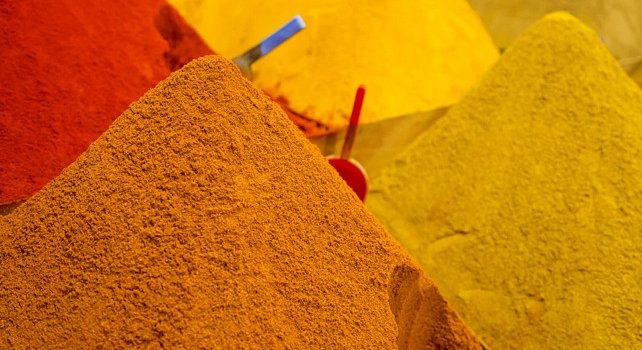Moroccan cuisine
Moroccan cuisine enjoys an international reputation but there is more to it than the well-known tajines and couscous. Because of Morocco’s ancient camel routes across the desert and the influence of various invasions, occupations and migrations, Moroccan cuisine is a veritable melting-point of flavours. Spices from the East, Jewish dietary practices, French cuisine and the availability of abundant fresh, local produce have all contributed to modern Moroccan cooking. Moroccan food is full of spices, but is seldom hot - chilli can be added in the form of harissa, a paste made of ground chilli peppers.
Moroccans say that the best dishes are enjoyed in the home and without a doubt, Moroccan home cooking is something special. However, tourism has driven a culinary revolution in many Moroccan cities and the quality of restaurants - serving both Moroccan and international menus - rivals that of many European cities today.
Breakfast
Moroccans typically enjoy bread products, coffee or tea and sometimes soup for breakfast. In rural areas, the breakfast consists of bread, tea and olives or dates. Although Moroccans typically sip their bread in olive or argan oil, honey or amlou (a paste made of almonds and argan oil a little like peanut butter) in your hotel your breakfast will probably feature also delicious freshly squeezed orange juice and jam.
Lunch
Many Moroccans head home for a hot lunch, although in larger cities workers may take a sandwich on the run. On a Friday, after the lunchtime prayer, families all over Morocco enjoy couscous. Moroccan couscous is prepared by steaming tiny balls of rolled flour (essentially micro-pasta) and steaming it several times until it achieves a fluffy consistency. It is a long way from the instant couscous known abroad! The semoule is topped with a broth of steamed vegetables and meat. Everyone tucks in to a communal dish, with the best titbits often being nudged towards the guests or the head of the family! Couscous can also be made with cornmeal for a gluten-free option.
In coastal towns, lunchtime is the best time to enjoy grilled fish. Fish is landed in the middle of the day and Moroccans are sceptical about storing it for too long. There is nothing quite like freshly grilled sardines with a salade marocaine (diced tomato, cucumber and herbs) and a squeeze of lemon!
Teatime
Moroccans often eat late at night and so enjoy a gouter (literally, a taste) around 4-5pm. In the home, this is the time to roll out the handmade pastries and cakes of every Moroccan housewife’s repertoire. Moroccan sweets often feature ground almonds, plenty of sticky honey and a liberal dash of rosewater or orange flower water to give them that distinctive, exotic flavour. In the street, you will see hot griddles where msimen are being prepared. These flaky pancakes are delicious with honey or soft cheese and are often served with harira soup. It’s the perfect way to stem your hunger before a late dinner!
Dinner
Moroccans often eat the national dish, tajine, in the evening. Tajine refers to the dish (the terracotta dishes with the conical hat found all over the country) as well as the contents, which are a kind of stew. The shape of the dish enables the contents to be steamed, ensuring they absorb the spices and become succulent and juicy. Moroccans love a sweet/savoury palate and it is common to find meat (chicken, lamb or beef) served with dried fruits such as sultanas, apricots or prunes. The locality and the season determine the ingredients. In coastal areas, fish tajine is popular and id often served with olives. Restaurants will also prepare a vegetable tajine for vegetarians. Typical tajine spices include cumin, ginger, paprika, turmeric, chilli (harissa) and pepper. Cinnamon may be added for sweetness. The combination is different depending on the main ingredient, and the spices may be mixed with olive oil, lemon juice, fresh coriander and flat leaf parsley and garlic to make a chermoula or marinade. For a very special occasion, saffron - which grows in the Anti-Atlas region of Morocco - may be added, but even though it is considerably cheaper in Morocco than elsewhere, it is still a luxury item for many Moroccan families. Spices can be bought whole or ground and make a great souvenir of your Moroccan holiday.
In larger restaurants, your meal may be preceded by a selection of Moroccan salads. These are typically made from cooked vegetables and are the well-guarded secret of Moroccan cuisine. Featuring vegetables such as beetroot, carrot, pumpkin, broad beans, green beans, tomato or peppers, these salads are intricate to prepare and are thus a dying art. However, they are a great way to experience the delicate sweet and savoury flavours that are the essence of Morocco.
Dessert
Moroccans are not big on desserts, preferring to leave the cakes and pastries for teatime. In fact the word ‘dessert’ is synonymous with fruit. And why not? Morocco has fabulous, seasonal fruits and nuts which are a great way to conclude your meal. Locally grown fruits include (depending on the season): apples, bananas, figs, strawberries, cherries, oranges, grapefruit, prickly pear and many more. Watch out for street-side stands where you can enjoy super-fresh smoothies and juices.
See our FAQ for information on special diets and allergies.

